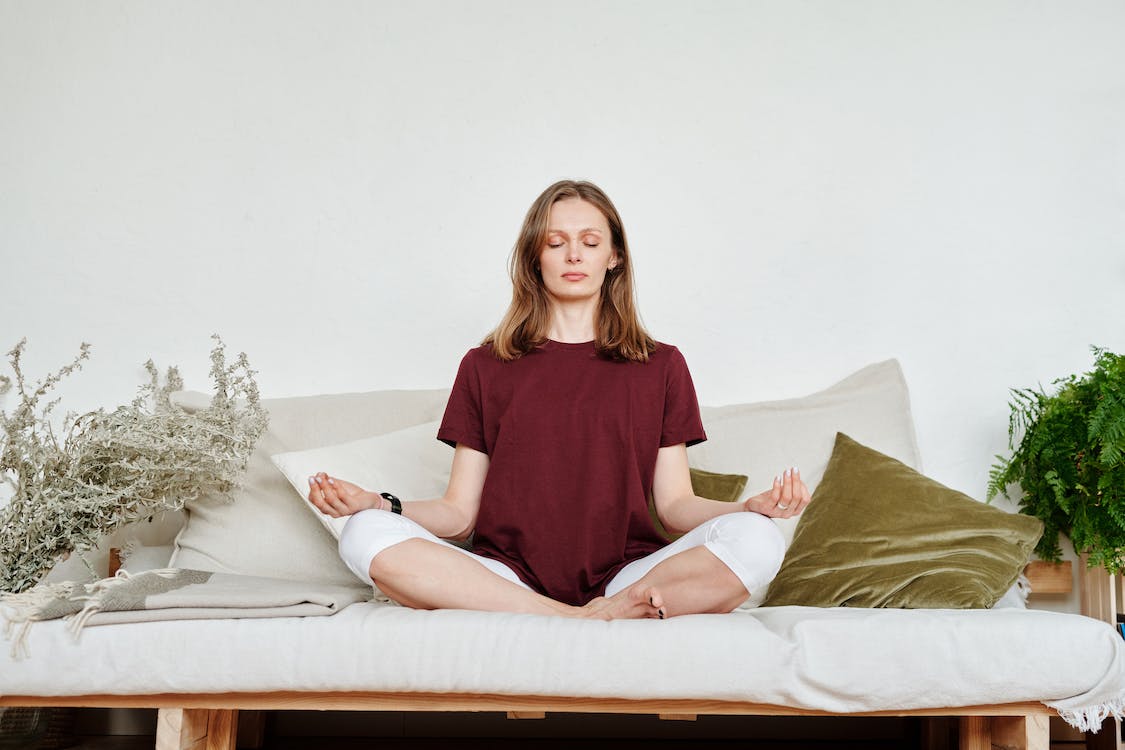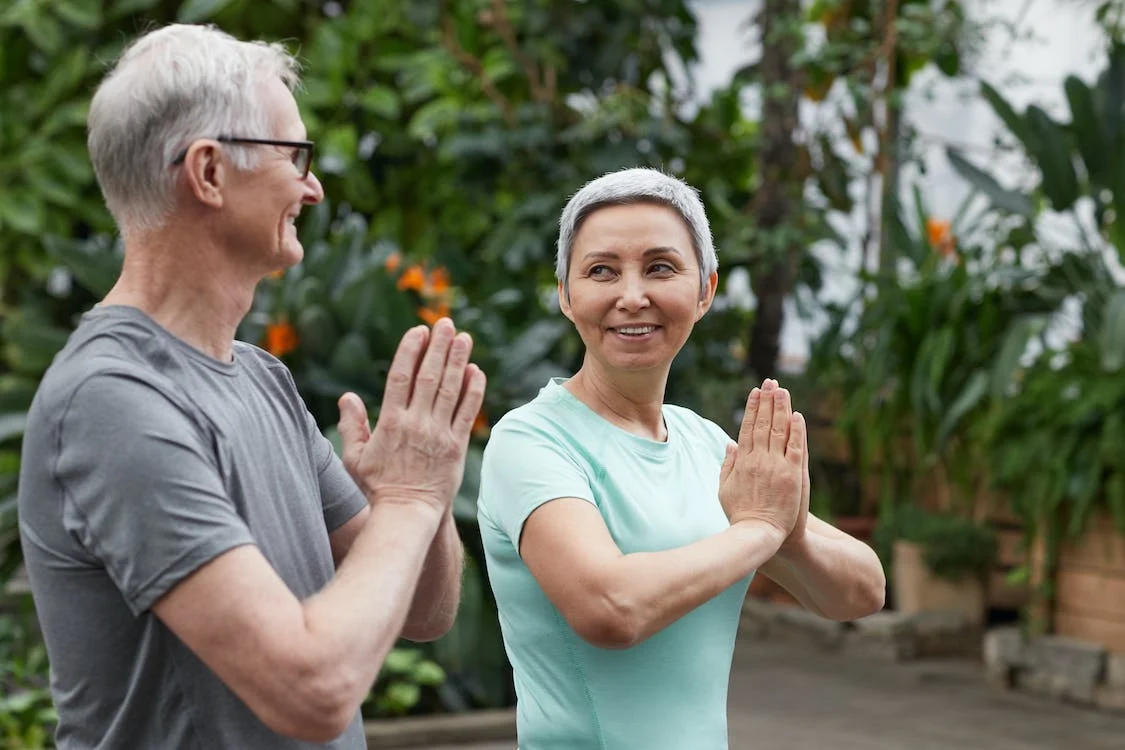MINDFULNESSA Beginner’s Guide to Meditation
As a physician and a meditation teacher, I love discussing the transformative effects that meditation can have in improving one’s quality of life.
In this article, we explore the basics of meditation, its numerous benefits for physical, mental and emotional well-being, and provide you with practical tips to start your meditation journey.
What is meditation?
In the words of Jack Kornfield, one of my meditation teachers in the MMTCP (Mindfulness Meditation Teacher Certification Program): meditation is not just one thing, just like ‘sport’ is not just one thing. There are many different ways to play sports. Similarly, there are many different methods to meditate.
In general, meditation is the focus of attention in a deliberate way. And in doing so, it helps cultivate present-moment awareness, develop a non-judgmental attitude, and foster a deep connection with oneself. There are countless different ways to meditate, which can be grouped into a few main categories:
Mindfulness meditation
Mindfulness is a nonjudgmental attention to the present moment. Being mindful means seeing things the way they are rather than trying to make them different. Jack Kornfield teaches that there are two parts to mindfulness- the receptive and the active parts. The receptive aspect of mindfulness is a non-judgemental awareness of the present moment, rather than thinking about something like the past or the future. The active part of mindfulness involves responding to the present situation with awareness and intention.
Examples of mindfulness meditation:
– Body scan
– Vipassana insight meditation
– Contemplation of feelings
– Contemplation of thoughts
– Contemplation of mind states and relation to experience
Contemplative meditation
Contemplation involves taking reflecting on a specific idea, question, or situation. The object of contemplation is placed into one’s mind and heart and reflected upon and can often provide wisdom and insight.
Examples of contemplative meditation:
– Scriptures
– Prayers
– Words and poetry
– Themes like gratitude or suffering
– Prayer
Devotional practice
Devotional practice involves focusing on an inspiration to connect to something bigger. There is often a component of surrendering to a higher power. Prayer, whether to God or to a more generic source of creation, is a form of meditation.
Examples of devotional meditation:
– Prayer
– Song
– Visualization
– Bhakti yoga
Concentration meditation
Concentration meditation involves the complete focus and attention onto one particular experience or object. As the mind becomes unified with the focus of attention, one’s own identity slowly starts to drop away. Concentration meditation is different from contemplative medicine which involves reflecting on the meaning of an object or experience.
Examples of concentration mediation
– Visual concentration like a candle flame, a tree, or image like a mandala
– Mantra practice ie transcendental meditation
– Body concentration- body scan
– Heart state concentration- concentrating on compassion, joy, etc.
What are the benefits of meditation?
Meditation holds the potential to enhance our physical, mental, and emotional health. Many of these benefits have been studied and are supported by scientific research as outlined below.
Stress reduction
One of the well-established benefits of meditation is the ability to reduce stress. Meditation activates the parasympathetic nervous system (the relaxation response), lowers stress hormones, and cultivates a sense of calm amidst the chaos of daily life. Studies have found that 20 minutes of meditation per day for 8 weeks can reduce the size of the amygdala, the centre of the brain associated with stress and fear.
Mood (depression and anxiety)
Several studies have found that meditation can alleviate symptoms of anxiety and depression. A meta-analysis (https://jamanetwork.com/journals/jamainternalmedicine/fullarticle/1809754) with over 3500 people showed that meditation interventions had a moderate effect size in reducing symptoms of anxiety and depression. Meditation training has been shown to reduce symptoms of post-traumatic stress disorder (PTSD).
Sleep
Meditation has been found to be effective in reducing insomnia symptoms, improving sleep quality, and increased total sleep duration. It has been associated with a decrease in sleep disturbances including nighttime awakenings and difficulties falling asleep.
Pain
Studies have demonstrated that meditation can help reduce pain intensity, increase pain tolerance, and improve pain-related quality of life. Patients who meditate have been shown to require less opioids for pain control and to have less functional limitations.
Concentration and cognition
Meditation enhances cognitive function, attention, and focus. Regular practice strengthens the brain’s neural pathways, enhances working memory, and boosts cognitive abilities.
Blood pressure and cardiovascular health
Meditation has been associated with improved cardiovascular health including lower blood pressure and overall reduced risk of heart disease.
Benefits in cancer patients
Several studies have demonstrated that meditation improves the quality of life of cancer patients, and their caregivers. It enhances emotional regulation, reduces symptoms of depression and anxiety and promotes a more positive outlook.
Tips on getting started
Embarking on a meditation journey can seem like an overwhelming and daunting task, but with a few simple guidelines it is possible to get started with ease. This section provides practical tips on choosing a type of meditation, overcoming mental barriers to meditation, finding the right setting, and addressing challenges which are commonly encountered by beginners.
How to choose a type of meditation
The list of different types of meditation is endless and this can be overwhelming for a beginner who wants to find the right one to start with. A couple of things to consider that can help navigate through the sea of options:
Learn about the different types of meditation
We have outlined some of the practices above, but delve deeper into understanding what each type of meditation entails and see what seems appealing.
Reflect on your intention
What has inspired you to be curious about meditation? Whether you seek stress reduction, emotional well-being, spiritual growth, or improved concentration, clarifying your intentions for beginning meditation is useful. You may find that one of the methods of meditation may align most closely with your intention.
Overcoming mental barriers to starting
The idea of meditating can be overwhelming for many people. Fears that commonly arise include a fear of being bored and wasting time and of the inability to sit still and stop the monkey mind from jumping all over the place. Some people are afraid that embarking on a meditation journey will involve observing certain religious or spiritual practices that they do not believe in.
Start slow
My advice is to view meditation as a mode of relaxation rather than anything else. To start off, simply lying comfortably on your bed and focusing on your breath for 5 minutes is an excellent introduction to meditation. It does not need to have any religious connotations. It does not need to be an arduous 60 minutes of lotus pose to obtain spiritual enlightenment! It can be very simple, and very doable.
And as you become comfortable with 5 minutes of slow breathing, you will start to feel ready for longer durations and different approaches to your meditation. Eventually you should aim to meditate for 20 minutes per day which has been shown in clinical trials to significantly reduce levels of stress hormones in the blood.
The right setting
Creating an environment which is conducive to meditation is important. This can be unique for different people and so it may take some experimentation to discover what works best for you.
Find a quiet, comfortable place to meditate. Avoid distracting background sounds which could easily grab your attention. Turn your phone on silent and turn off notifications. Carve out a time where you won’t be called upon- perhaps asking those around you to give you some uninterrupted time. If you have children, try meditation before they wake up (my personal favorite) or after they go to bed.
For some people, gentle background noise such as instrumental music or nature sounds can enhance the meditation experience. Being outdoors in nature can be particularly relaxing and there is evidence to suggest that being surrounded by nature can elicit an immediate feeling of well-being.
Some people find that surrounding themselves with certain things can enhance their ability to relax- examples include candles/incense, plants, meaningful objects, inspiring artwork, or sacred symbols. When you first start out with meditation, try experimenting with different aspects of your setting to see which are most suitable in supporting you to feel relaxed and peaceful.
 Comfortable position
Comfortable position
Finding a comfortable position is crucial to being able to relax and allow your mind to ease into a meditative state of mind. When I first started my meditation practice, I found it much easier to relax and therefore meditate while lying down rather than sitting upright. Any position is fine- I know some people who meditate standing up! But your body should feel well supported so you’re not feeling imbalanced or at risk of falling over. Your body temperature should be comfortable, so dress accordingly in loose fitting easy clothing. If you plan on sitting upright then consider either having your back against a wall or using a meditation cushion for comfort. If you are sitting in a chair, place your feet flat onto the ground and your arms loosely by your side.
Common challenges faced by beginners
Meditation, like any practice, can present challenges along the way. From restlessness and difficulty focusing to dealing with judgmental thoughts, it’s essential to approach these challenges with compassion and perseverance.
Mindfulness is like a muscle in the brain- the more you work it out, the stronger it will get. At first when you start out, you will likely feel discouraged. It may feel difficult and you may not feel any benefits. You may fall asleep or your mind may be stuck ruminating about the past or the future for the entire duration of the meditation. This is all normal! Just stick to it and I promise, over time, you will start to notice a shift in your overall feeling of wellbeing.
When I took my first MBSR (Mindfulness Based Stress Reduction) course in 2012, I was a skeptical beginner. But my meditation teacher was very strict in enforcing 30 minutes of guided meditation per day, no excuses. I reluctantly obliged, despite feeling no benefits for two weeks. And then suddenly, at the end of two weeks, I felt a connection to my feet, my hands, my face that I had never experienced before! Finally, I had built up my mindfulness muscle to a point that I developed a new sense of connection to my body. I share this story because many people try meditation a few times but stop because they don’t notice any benefits. Please stick to it and you will reap the fruits of your hard labor!
Conclusion
The beauty of meditation lies in its integration into everyday life. Not only can you experience a blissful sense of calm while you are engaged in meditation, but you will notice a greater sense of wellbeing throughout the rest of your daily activities- while you eat, while you walk and get around, and in your interactions with others. This ability to live life from a more calm and relaxed state translates into a healthier body and mind.
References
Kabat-Zinn, J., et al. (1992). Effectiveness of a meditation-based stress reduction program in the treatment of anxiety disorders. American Journal of Psychiatry, 149(7), 936-943.
and Jevning et al. (1996)
Kral TRA, et al Science Advances 8(20) May 2022
Goyal, M., et al. (2014). Meditation programs for psychological stress and well-being: A systematic review and meta-analysis. JAMA Internal Medicine, 174(3), 357-368.
Boyd JE, Lanius RA, McKinnon MC. Mindfulness-based treatments for posttraumatic stress disorder: a review of the treatment literature and neurobiological evidence. J Psychiatry Neurosci. 2018 Jan;43(1):7-25.
Ong, J. C., et al. (2014). A mindfulness-based approach to the treatment of insomnia. Journal of Clinical Psychology, 70(7), 1-15.
Wang, X., et al. (2016). Mindfulness-based stress reduction for insomnia comorbid with cancer: A randomized controlled trial. Journal of Clinical Oncology, 34(28), 3347-3354.
Hariprasad, V. R., et al. (2019). Impact of mindfulness-based stress reduction (MBSR) on sleep quality in chronic insomnia disorder. Medicine, 98(31), e16563.
(Effect of mindfulness-based stress reduction vs cognitive behavioral therapy or usual care on back pain and functional limitations in adults with chronic low back pain: A randomized clinical trial. JAMA, 315(12), 1240-1249.
Zeidan F et al. (2010). Mindfulness meditation improves cognition: Evidence of brief mental training. Consciousness and Cognition, 19(2), 597-605.
Jha AP et al. (2007). Mindfulness training modifies subsystems of attention. Cognitive, Affective, & Behavioural Neuroscience, 7(2), 109-119.
Anderson JW, Liu C, Kryscio RJ. Blood pressure response to transcendental meditation: a meta-analysis. Am J Hypertens. 2008 Mar;21(3):310-6.
Sikorskii, A., et al. (2016). Effects of mindfulness-based interventions on biomarkers and quality of life in cancer patients: A systematic review. Supportive Care in Cancer, 24(10), 4057-4073.
Perrins-Margalis N., Rugletic J., Schepis N., Stepanski H., Walsh M. The immediate effects of a group-based horticulture experience on the quality of life of persons with chronic mental illness. Occupational Therapy in Mental Health. 2000; 16: 15-32



